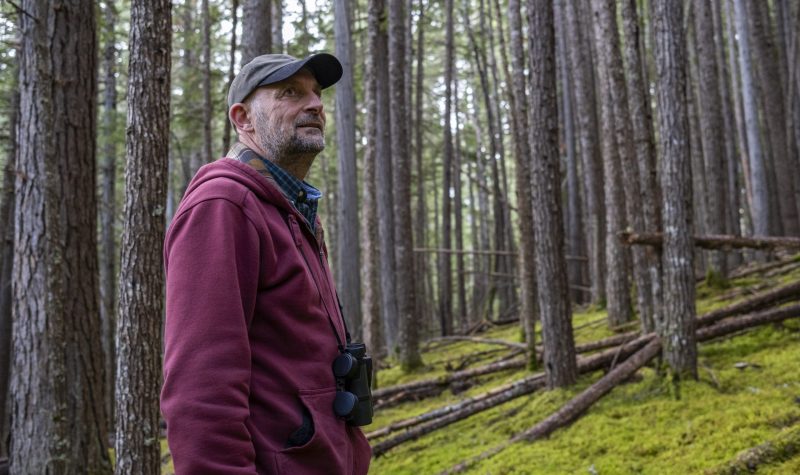The Northern Goshawk is synonymous with the mature and old growth forests of Northwestern B.C. For decades loggers and foresters would see the birds constantly, whether they were dive-bombing heavy machinery or letting out the unmistakable Kak-kak-kak. In almost every forest landscape you could find a nesting Goshawk.
But in last 20 years, industrial, large scale clear cut logging, all over British Columbia, has resulted in the slow demise of these highly territorial birds. What was once a common sight in many forests, has now become a sight of the past.
"At one point you could map a forest with the locations of Goshawk nest because they were consistently spaced and abundant," said Doyle. "Now, there are very few foresters and loggers that know how they look and what they sound like."
Although these birds were once a healthy gauge of an intact forest, today their dwindling numbers echo a silently alarming sight: empty goshawk nests and large and large clearcut forests.
At one point goshawks we're found all over Europe, parts of Asia and almost all of north America, except for the high artic. But they breed slowly and as more and more old growth and mature forests are logged, fewer and fewer and goshawks have survived. At the same time, recording accurate numbers of birds and nests were difficult as many nests are so well built, they will last years without birds, distorting data counts.
Although there are some protections for these birds, after years of intense logging, they fall way short and now the Northern Goshawk is one of the most engaged species in the world.
Listen to the full episode below.


